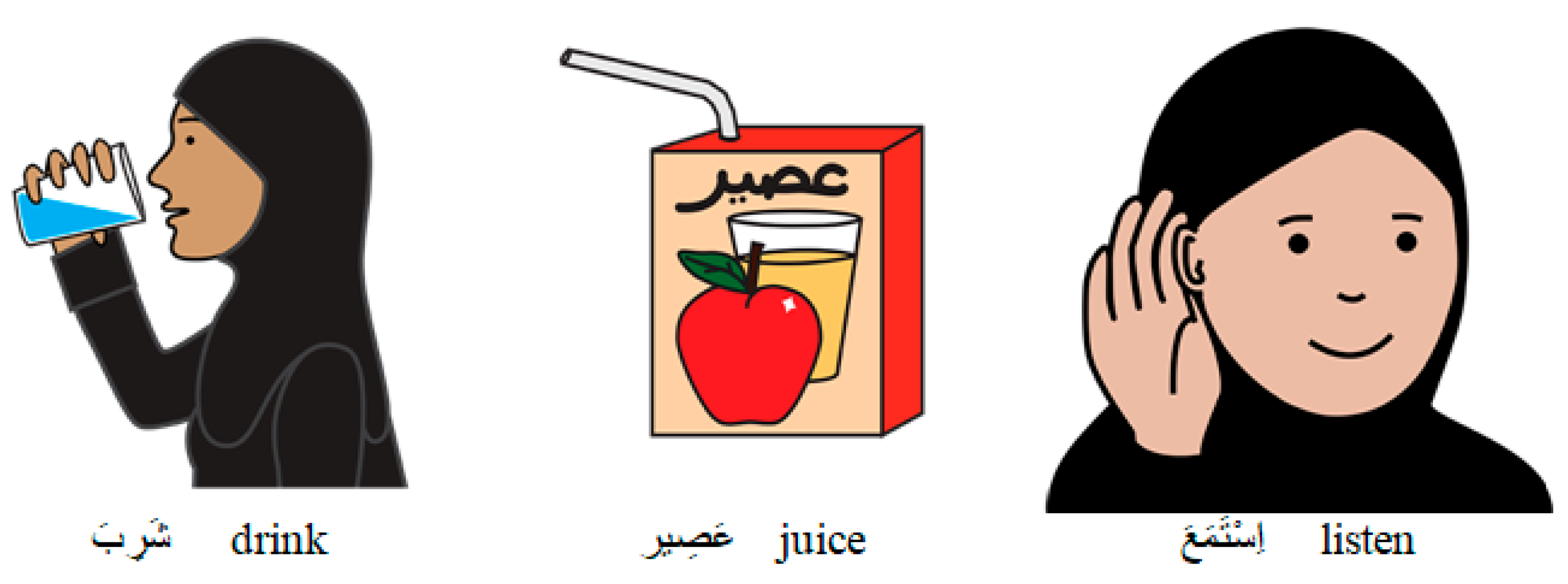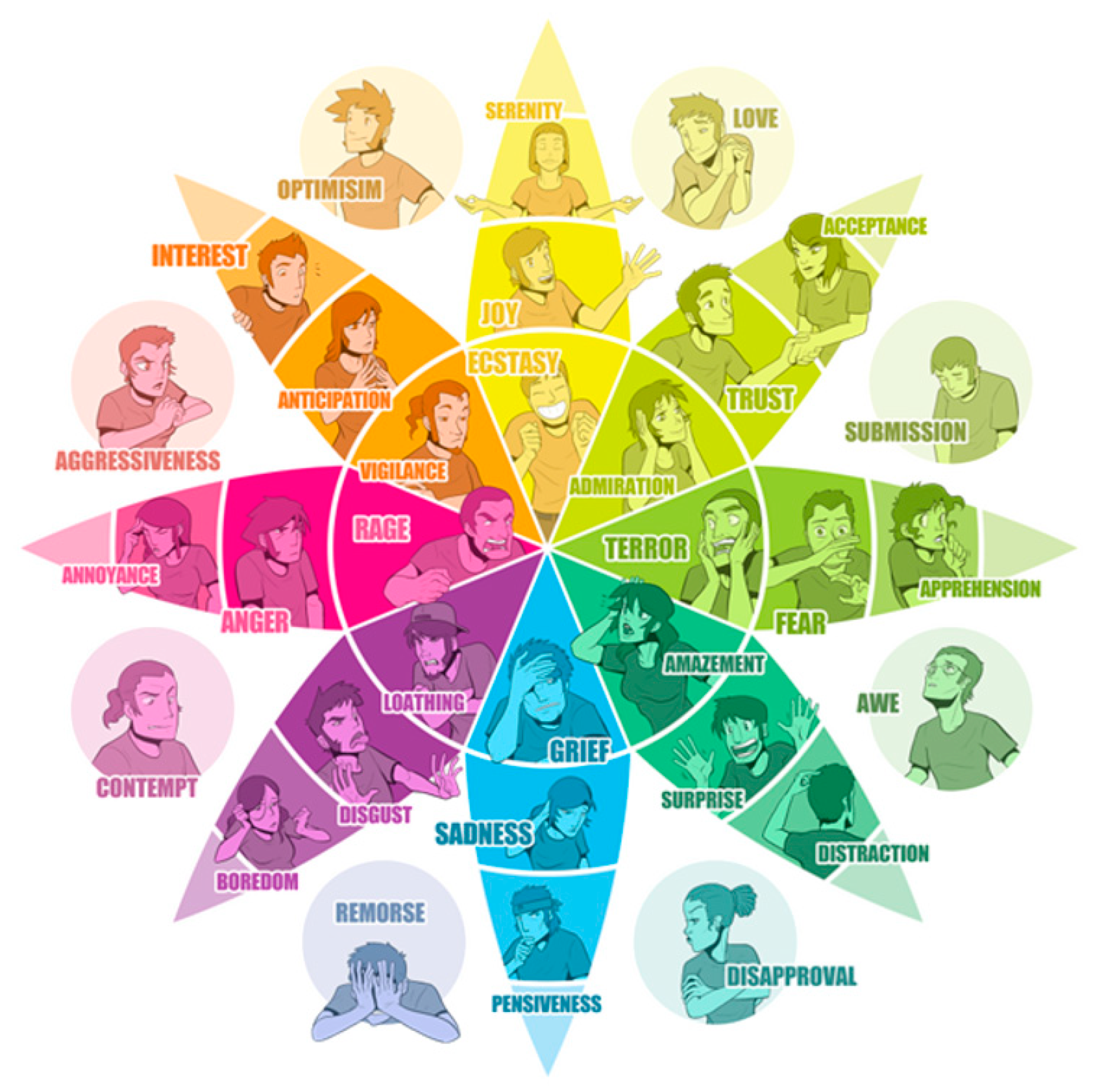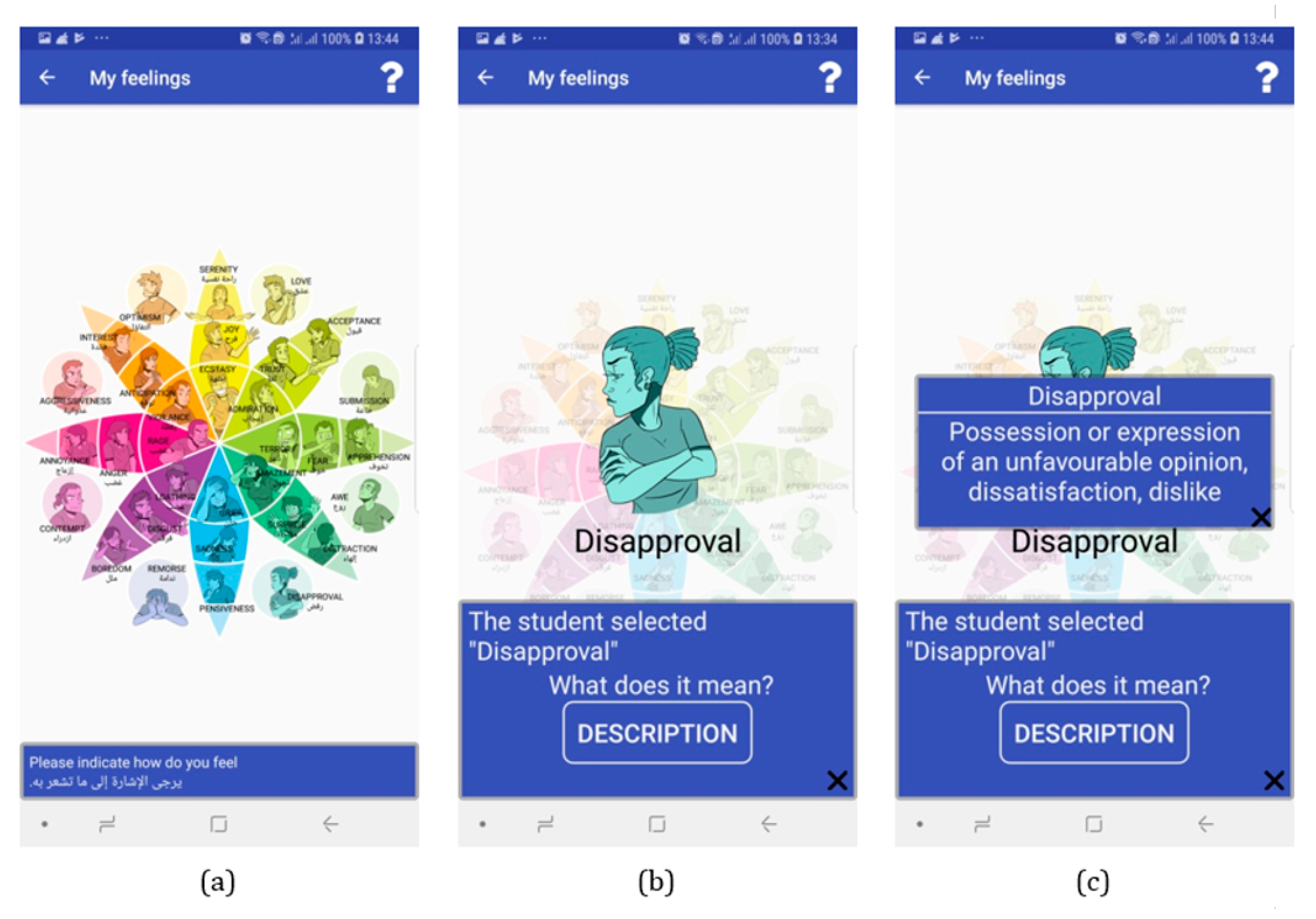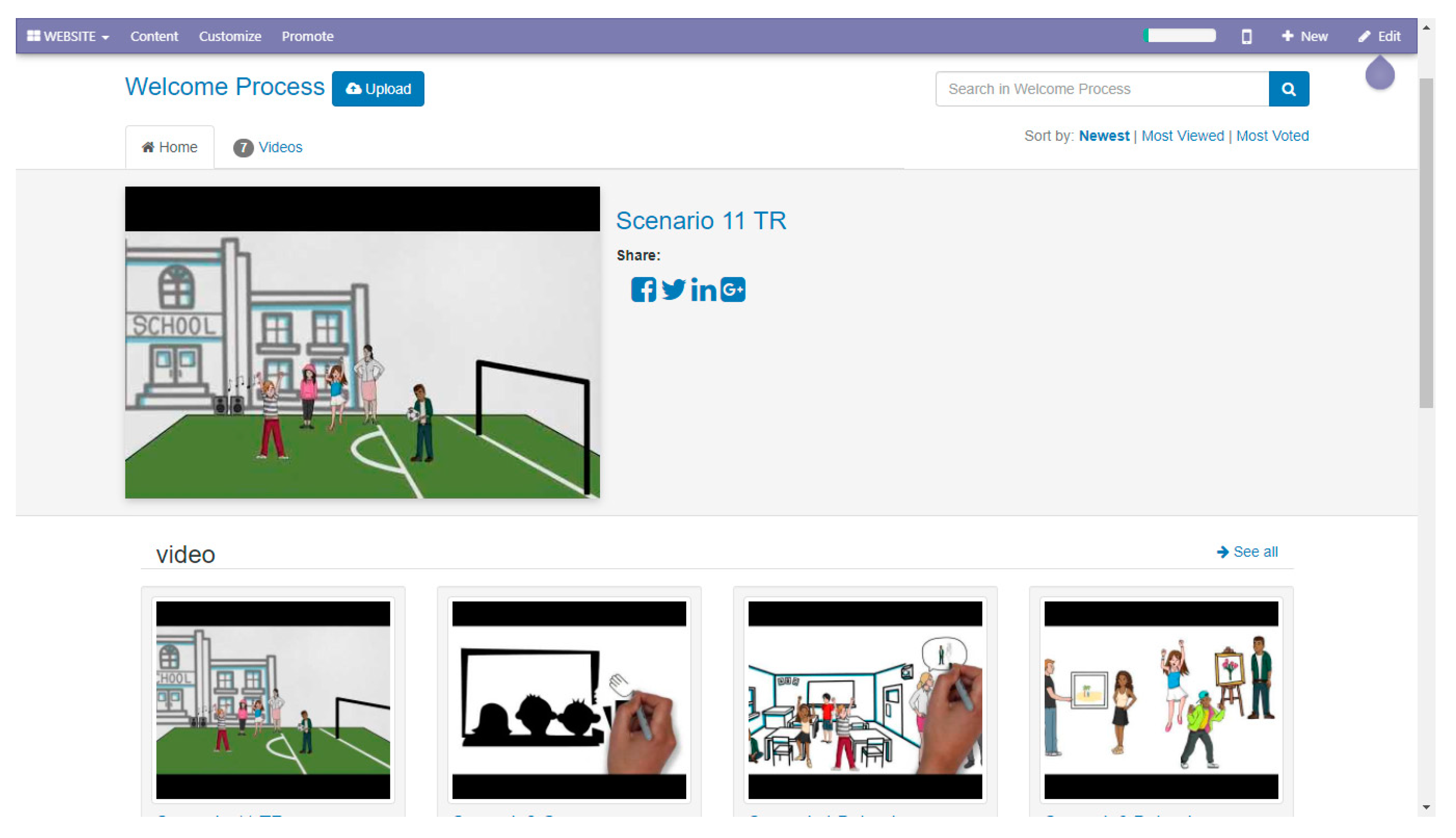Digital Tools as an Enabler for Educational and Training Processes: The Case Study of REFUGEEClassAssistance4 Teachers Project †
Abstract
:1. Introduction
Literature Review
- Digitization: “the technical process of converting data and information from analogue into digital formats, meaning adoption and usage of binary digits”;
- Digitalization: “the processes of transition toward non-physical information storage, transmission, and processing by using digital technologies”;
- Digital transformation: “comprehensive applications of digital technologies in all facets of society to improve and extend products and services, and the creation of new digital alternatives” [8] (p. 301).
2. Case Study of REFUGEEClassAssistance4Teachers Project
2.1. The Developed Digital Tools
2.1.1. REFUGEEClassAssistance4Teachers Mobile Application
- Providing access to learning material (training materials, practices, videos, guidelines) for the teacher.
- Access to online forums for teachers to share their experiences.
- Symbol supported communication whereby both the teacher and the pupils can communicate via symbols available in the national partner language (Dutch, Bulgarian, Greek, Turkish, and Arabic), (see Figure 1) based on a bilingual Arabic/English symbol dictionary (Tawasol) (see Figure 2) of frequently used words in spoken and written communication represented by recognizable images and pictograms, relevant to the cultural background of the refugee children. This is especially relevant there where spoken language otherwise would create a barrier.
- Translation support which allows to translate from the national host country language to Arabic, Persian, French, Turkish, Russian, Pashto, and English (see Figure 3).
2.1.2. REFUGEEClassAssistance4Teachers Portal
2.1.3. Videos
- welcome process
- mental health of teachers working with refugee children
- social, cultural, and religious aspects in a diverse society
- communication and language teaching
- mental and physical health of refugee children
2.2. Piloting Process Feedback
3. Conclusions
Author Contributions
Funding
Acknowledgments
Conflicts of Interest
References
- Schmutte, A.M.; Graf, N.; Rascher, S. Führen und Managen in der Digitalen Transformation; Springer Gabler: Wiesbaden, Germany, 2020. [Google Scholar]
- Savić, D. COVID-19 and work from home: Digital transformation of the workforce. Grey J. 2020, 16, 101–104. [Google Scholar]
- EPALE—Electronic Platform for Adult Learning in Europe. The Rise of Online Learning: The Benefits and Challenges for Teachers—Part Two: Challenges. 2019. Available online: https://epale.ec.europa.eu/en/blog/rise-online-learning-benefits-and-challenges-teachers-part-two-challenges (accessed on 11 September 2020).
- EPALE—Electronic Platform for Adult Learning in Europe. The Rise of Online Learning: The Benefits and Challenges for Teachers—Part One: Benefits. 2019. Available online: https://epale.ec.europa.eu/en/blog/rise-online-learning-benefits-and-challenges-teachers-part-one-benefits (accessed on 11 September 2020).
- Hillmayr, D.; Ziernwald, L.; Reinhold, F.; Hofer, S.I.; Reiss, K.M. The potential of digital tools to enhance mathematics and science learning in secondary schools: A context-specific meta-analysis. Comput. Educ. 2020, 153, 103897. [Google Scholar] [CrossRef]
- Liesa-Orús, M.; Latorre-Cosculluela, C.; Vázquez-Toledo, S.; Sierra-Sánchez, V. The technological challenge facing higher education professors: Perceptions of ICT tools for developing 21st Century skills. Sustaintion 2020, 12, 5339. [Google Scholar] [CrossRef]
- EPALE. Resource Kit #3-Adult Education in the Post COVID-19 Era. 2020. Available online: https://epale.ec.europa.eu/sites/default/files/resource_kit_03_0.pdf (accessed on 15 September 2020).
- Legner, C.; Eymann, T.; Hess, T.; Matt, C.; Böhmann, T.; Drews, P.; Ahlemann, F. Digitalization: Opportunity and Challenge for the Business and Information Systems Engineering Community. Bus. Inf. Syst. Eng. 2017, 59, 301–308. [Google Scholar] [CrossRef]
- Marín-Díaz, V.; Riquelme, I.; Cabero-Almenara, J. Uses of ICT tools from the perspective of chilean university teachers. Sustaintion 2020, 12, 6134. [Google Scholar] [CrossRef]
- Schwarz, M.; Scherrer, A.; Hohmann, C.; Heiberg, J.; Brugger, A.; Nuñez-Jimenez, A. COVID-19 and the academy: It is time for going digital. Energy Res. Soc. Sci. 2020, 68, 2. [Google Scholar] [CrossRef] [PubMed]
- Arrosagaray, M.; González-Peiteado, M.; Pino-Juste, M.; Rodríguez-López, B. A comparative study of Spanish adult students’ attitudes to ICT in classroom, blended and distance language learning modes. Comput. Educ. 2019, 134, 31–40. [Google Scholar] [CrossRef]
- Lemeshchenko-Lagoda, V.; Kryvonos, I.; Kolodii, O. Integration of information and communication technologies into the process of learning the course of English for specific purposes as one of the requirements for sustainable future development. E3S Web Conf. 2020, 166. [Google Scholar] [CrossRef]
- Yin, R.K. Case Study Research: Design and Methods, 5th ed.; Sage Publication: Thousand Oaks, CA, USA, 2015. [Google Scholar]
- REFUGEEClassAssistance4Teachers. REFUGEEClassAssistance4Teachers Website. 2019. Available online: https://portal.teachers4refugees.eu/page/whatisportal (accessed on 11 September 2020).
- United Nations. Economic and Social Council. In The Oxford Handbook on the United Nations; Oxford University Press: Oxford, UK, 2020. [Google Scholar] [CrossRef]
- REFUGEEClassAssistance4Teachers. Methodological Guidance for School Principals/Headteachers. 2019. Available online: https://portal.teachers4refugees.eu/slides/set-of-guidelines-assessed-against-nationalregional-realities-and-characteristics-90 (accessed on 12 September 2020).
- AbuJarour, S.; AbuJarour, M. Connecting Human Potentials and Opportunities through Technology: A Digital Integration Use Case. In Proceedings of the 24th Pacific Asia Conference on Information Systems (PACIS 2020), Dubai, United Arab Emirates, 22–24 June 2020; p. 30. [Google Scholar]
- Oduntan, O.; Ruthven, I. People and places: Bridging the information gaps in refugee integration. J. Assoc. Inf. Sci. Technol. 2020. [Google Scholar] [CrossRef]
- Patil, A. The role of ICTs in refugee lives. In Proceedings of the Tenth International Conference on Information and Communication Technologies and Development, Ahmedabad, India, 4–7 January 2019. [Google Scholar] [CrossRef]
- Turkay, B.; Turkay, S. Understanding Turkish NGOs’ digital technology use in helping refugees in Turkey. Conf. Hum. Factors Comput. Syst. Proc. 2019, 1–6. [Google Scholar] [CrossRef]
- REFUGEEClassAssistance4Teachers. REFUGEEClassAssistance4Teachers Portal. 2019. Available online: https://portal.teachers4refugees.eu/ (accessed on 13 September 2020).
- CopyPress, Robert Plutchik’s ‘Wheel of Emotions’. 2019. Available online: http://www.copypress.com/blog/your-fragile-emotions-illustrated/ (accessed on 13 September 2020).







| Term | Description |
|---|---|
| e-Learning | broadly defined as almost any activity making use of ICT |
| Online Learning | part of distance learning; also used as a general term for educational environments using ICT, computers, and the Internet; learner is at a distance from the tutor or instructor |
| Blended Learning | use of both online and face-to-face instruction |
| Mobile Learning | any form of learning through the use of a mobile device |
| Benefits | Disadvantages |
|---|---|
| Enabling students to collaborate more effectively | Exclusion because of access to IT infrastructure |
| Inclusivity of academic exchanges | Low interaction (e.g., hard to engage in informal talks) |
| Reduction of the time and costs of organizing sessions | Low student engagement/high level of dropout |
| Saving of resources | Result in higher stress levels and reduced personal well-being |
| Enabling more diverse working environment (geographical and time flexibility) | Low digital competence of educators |
Publisher’s Note: MDPI stays neutral with regard to jurisdictional claims in published maps and institutional affiliations. |
© 2021 by the authors. Licensee MDPI, Basel, Switzerland. This article is an open access article distributed under the terms and conditions of the Creative Commons Attribution (CC BY) license (https://creativecommons.org/licenses/by/4.0/).
Share and Cite
Areta, O.; Van Isacker, K. Digital Tools as an Enabler for Educational and Training Processes: The Case Study of REFUGEEClassAssistance4 Teachers Project. Proceedings 2021, 74, 14. https://doi.org/10.3390/proceedings2021074014
Areta O, Van Isacker K. Digital Tools as an Enabler for Educational and Training Processes: The Case Study of REFUGEEClassAssistance4 Teachers Project. Proceedings. 2021; 74(1):14. https://doi.org/10.3390/proceedings2021074014
Chicago/Turabian StyleAreta, Ourania, and Karel Van Isacker. 2021. "Digital Tools as an Enabler for Educational and Training Processes: The Case Study of REFUGEEClassAssistance4 Teachers Project" Proceedings 74, no. 1: 14. https://doi.org/10.3390/proceedings2021074014
APA StyleAreta, O., & Van Isacker, K. (2021). Digital Tools as an Enabler for Educational and Training Processes: The Case Study of REFUGEEClassAssistance4 Teachers Project. Proceedings, 74(1), 14. https://doi.org/10.3390/proceedings2021074014





